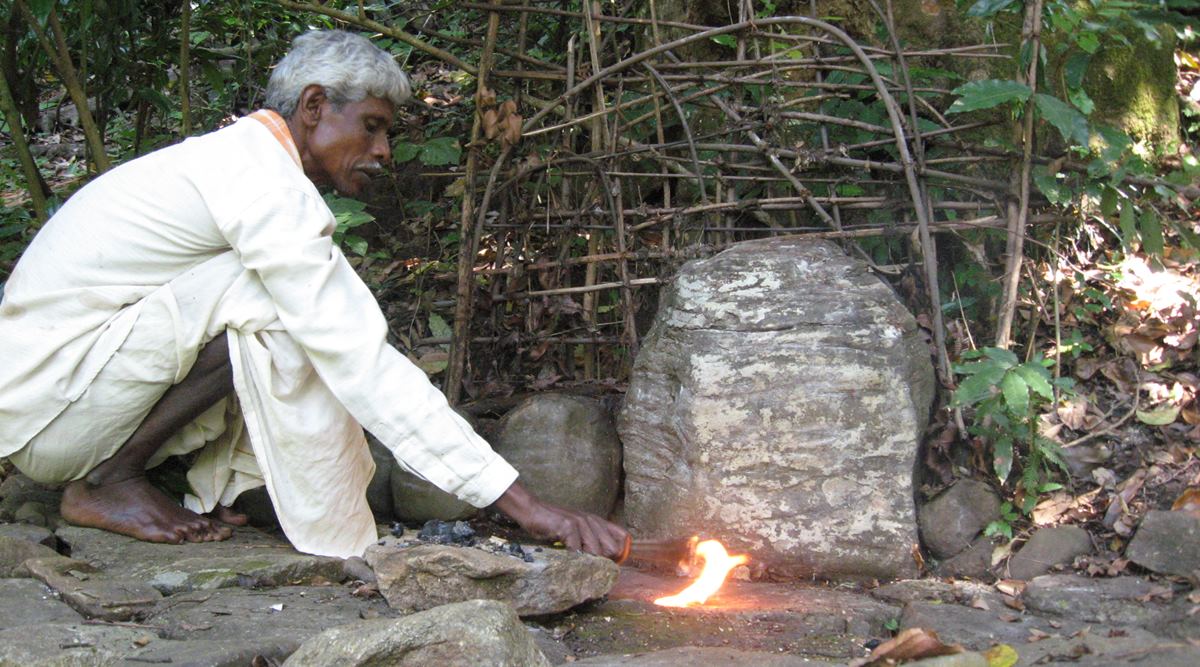
Goru goru ka gorukaana, kaadu kaapadi madgonaya, sings Dr C Madegowda as he tells the story of his individuals — the Solega group of the Biligiri Rangan Hills, Karnataka. “Goru Goru is the sound of the evergreen forest or the Kaana. The forest is our God and so is each tree, flower, fruit, and wildlife in it.” Dr Madegowda is a Senior Analysis Affiliate on the Ashoka Belief for Analysis in Ecology and the Surroundings (ATREE), Bangalore.
The Solega are a small group of round 30,000 individuals, who historically practiced a hunter-gatherer life-style, together with small-scale agriculture, and now stay in small hamlets all around the BR Hills, from the high-altitude evergreen forest to the lowland scrub forests.
Spending a number of years interviewing the elders of the tribe, a paper printed final month particulars how they understand wildlife interactions and the current ecological modifications within the area. The research aimed “to offer a voice to Solega individuals, as indigenous voices and factors of view are sometimes absent from discourses surrounding endangered wildlife, invasive species, and normal biodiversity conservation.”
A lot of the animals within the area are worshiped by the group. The tiger is seen as Lord Madeswara’s animal, Pandeswara is the elephant god, the Gaur belongs to Lord Karappa, and the sambar is the animal of Lord Kadodeya Muttaraya.
“Through the village competition, we even worship the leaves, flowers and fruits we acquire for the rituals. The Solega group has learnt to stay in concord with the wildlife. I believe we’ve an ideal sense of odor and listening to and might perceive if a wild animal is approaching. Lately, to seize a tiger within the Bandipur-Nagarhole area, the forest officers took assist from our group as we’re born gifted to speak with nature,” explains Dr. Madegowda. He is likely one of the authors of the paper printed in Frontiers in Conservation Science.
The competition of the Solega group (C. Madegowda)
The paper particulars fascinating tales from the group. One Solega elder narrates how their God protects them from the wild animals:
“Lord Mahadeswaraswamy tells the animals: my youngsters are coming, you shouldn’t be seen to them. The tiger turns into a termite-hill, sloth bear turns into a boulder, elephant turns into a hill and snake turns into a weed. This was the boon that our God gave us… However when you make a mistake (commit a sin), then they may positively come close to you [these animals]. See I will need to have carried out one thing improper and so the elephants got here close to my dwelling. “Alright, I’ve sinned, I’ll carry out a puje (ritual appeasement) in your identify, now go” [I said]. That is what we consider. If we sin, we should appease the Gods.”
Even birds play vital roles and the calls of sure birds are thought of to be portents. The Solega additionally reply to the birds with their very own vocal sign.
“There isn’t any human-wildlife battle; it’s extra of coexistence. In fact, there have been agonistic interactions, or aggressive ones — as an elephant raiding their crop, however the group by no means retaliates with violence. And that’s mediated by their spiritual beliefs,” says co-author Samira Agnihotri, alumna from the Centre for Ecological Sciences, Indian Institute of Science (IISc), Bangalore.
She explains how one invasive plant species, the lantana, has upset the tribes. “The group believes that the invasion occurred as a result of there was a ban on their conventional leaf-litter hearth practices. Yearly, the tribes set very low and slow-moving fires to the leaf litter within the forest within the month of January and February. This was earlier than varied legal guidelines have been enacted by the federal government and the world was declared as protected,” she provides. “There may be numerous unhappiness in the neighborhood about what the forest used to appear like, how it’s now, and the way it has affected the wellbeing of not simply their very own group but in addition the wildlife. Lantana overgrowth has induced a scarcity of many kinds of grass that are main meals sources for a lot of herbivores together with elephants.”
When requested if she plans to proceed working with the Solega, Dr Agnihotri says: “We’ve got solely touched the tip of the iceberg. There’s a enormous treasure, or wealth of knowledge that we will all profit from that’s but to be documented. And it’s quickly going extinct.”
Co-author Dr Aung Si, from the Institute for Linguistics, College of Cologne, Germany, has additionally been working with the Solega for a few years as their language accommodates numerous details about their conventional ecological information.
“The flexibility of the Solega, like different indigenous communities in India, to adapt their very own actions to mitigate battle with wild animals, together with their intensive conventional information on varied facets of forest ecology and animal behaviour, make them ideally suited companions for conservationists within the battle to protect native biodiversity, and shield endangered species. Their presence within the forests of the B. R. Hills shouldn’t be seen as aberrant, problematic or opposite to conservation targets, however as a definite benefit, provided that they’ve already lived for generations as stewards of the forest,” concludes the paper.









